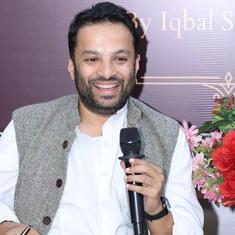Thoothukudi firing: Autopsies show protestors were shot in the head or chest, reports Reuters
Half of the victims were purportedly shot from behind.

Autopsies of 12 of the 13 people who were killed during protests against the expansion of Vedanta’s copper smelter in Tamil Nadu in May, indicate they were shot in the head or chest, Reuters reported. Half of the victims were purportedly shot from behind.
The article quoted unpublished reports compiled by forensic medicine experts from several government hospitals.
According to most police manuals, including the Tamil Nadu Police Standing Order book, crowd control must proceed with gradation. This means using the simplest techniques at first, such as asking the crowd to disperse. Firearms are only meant to be used as the last resort.
Former Tamil Nadu Director General of Police R Natraj had explained to Scroll.in in May that the police should first engage the agitators in dialogue. “Once the crowd knows we are firm, they disperse or facilitate them to achieve some success like meeting the authorities or giving some assurance,” he had said. “If that doesn’t work, warn them to disperse. Slowly use hierarchy of force like teargas, water canon.”
If that also doesn’t work, then lathi charge is to be used, he had said. “Only if there is extreme violence and arson, police resort to firing, that too just injure. We have rubber bullets and buck shots with pellets which disperse causing injury but not kill. Also aim below the knee to save vital organs.”
Several people were arrested for rioting, burning vehicles in the premises of the collectorate, pelting stones and damaging public property but no arrests have been made in connection with the killings so far.
The Thoothukudi district administration, state police officials and the Central Bureau of Investigation personnel looking into the killings did not respond to requests for comments on the findings, Reuters reported.
The deaths had prompted the state government to permanently shut down the plant soon after the violence. But the National Green Tribunal allowed the company to resume the plant’s operations last week. On Friday, the Madras High Court stayed this order for a month, following protests from activists. For two decades, activists and residents have protested against the plant, saying that it has contaminated the air and water in the region and caused health problems.
CBI’s case
The Central Bureau of Investigation started its inquiries in October following an order by the Madras High Court. The state government objected to this and filed a petition in the Supreme Court. On December 7, the Supreme Court refused to stay the Central Bureau of Investigation’s inquiry.
The CBI on November 29 registered a case against unidentified state police personnel and revenue department officials for the deaths. The agency charged the accused with, among other offences, criminal conspiracy, disobeying law with the intent to cause injury to people and criminal intimidation. But it did not name any police or revenue official in the FIR despite receiving video evidence and complaints naming a few officials.
In its order on August 14, the High Court had said that it “fail[s] to understand how not a single case, not even invoking Section 174 CrPC has been registered at the instance of the injured or family members of the deceased”. The court had said that an investigation in the case cannot be avoided.









